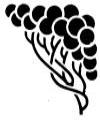|
In a sudden and
stunning press release issued only yesterday, Dr. Peter Pan Troglodytes
announced the immediate termination of the Ralph A. Bennett Teasdale's
ownership and management of the Primate Nooz. The
Nooz, which has been closed since August, 1993, has been
sold lock, stock and water coolers to the Kashihara Takeshitahara
Corporation of Japan for the sum of ¥2950, and with this issue
resumes publication. Employees who were concerned about having
to move to the Orient were relieved to learn that the international
headquarters of the Takeshitahara Corporation is instead relocating
to Hellmouth, where it plans to build a major primate research center
on the piece of vacant land next to the Old Tire Reclaiming Yards.
Mr. Kashihara Takeshitahara, brother of famed Japanese primate
specialist and rice carving expert Takeshi Takeshitahara, intends
to exercise close and direct control over the Primate Nooz,
but will permit publisher Arnett Putney, III and executive editor
Widen Lundale, Jr. to resume their positions for the time being,
subject to satisfactory sales in Japan.
The Takeshitahara
Corporation, makers of small motor scooters, microwave televisions,
energy coils for refrigerators, and nitrogen laser spotlights, thus
moves to consolidate its status as the leading corporate owner of
primate newspapers in the world, and will add Primate Nooz
and its two sister publications Primate Week and PRIMATE
LIFE to its journalistic stable, which currently includes Monkey
World (Singapore), Junior Ape Magazine (Osaka), Simian
Society Times (Bonn), and Chimp Digest (New York). Also
under the aegis of the Takeshitahara Corporation are the Obihiro
Monkey Museum on Hokkaido, the Blue Snowmonkey Reserve on Kyushu,
the Federal Institute of Advanced Simian Studies outside of Kobe,
and the Takeshi Takeshitahara Memorial Rice Carving Foundation.
Primatology reporting
has been very popular in Japan over the past couple of decades.
Several cities like Osaka, Yokohama, Hiroshi, and of course,
Tokyo, have primatology newspapers, and the Japanese National Television
System has its own Primate Study Network, with such shows as “Monkeys
of Japan,” “Koko Climbs Mt. Fuji,” and “Samurai
Simian.” It is to be hoped that some of these shows will
eventually be imported into the U.S. In the meantime, Hellmouth
residents are becoming more and more accustomed to seeing Japanese
faces in Joe's Not So Bad Cafe and at the ShopAlot, and Gratiano
Bros. Meat Market has promised to introduce sushi.
* PRIMATE NOOZ PURCHASED BY TAKESHITAHARA
CORPORATION!
|






